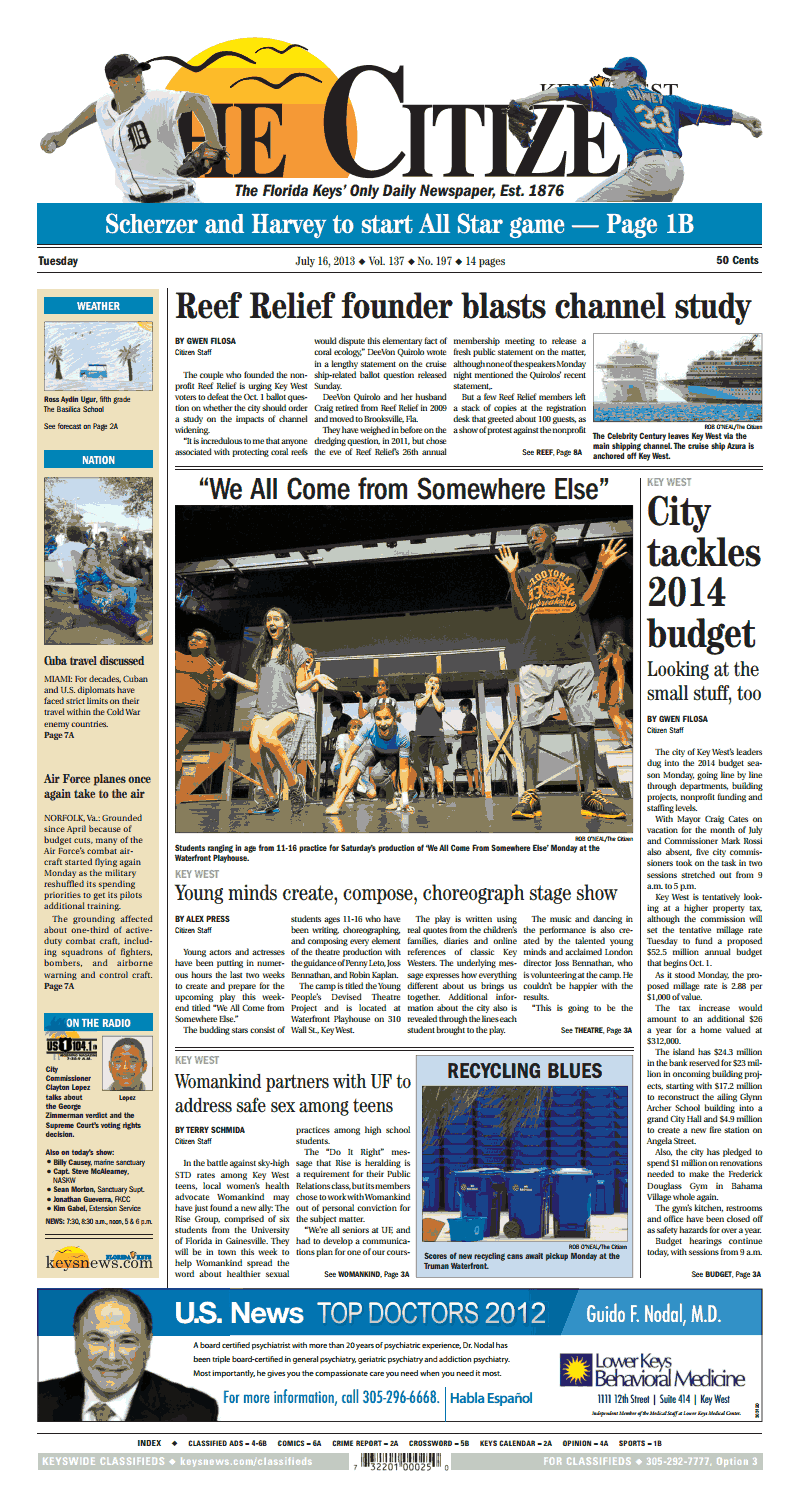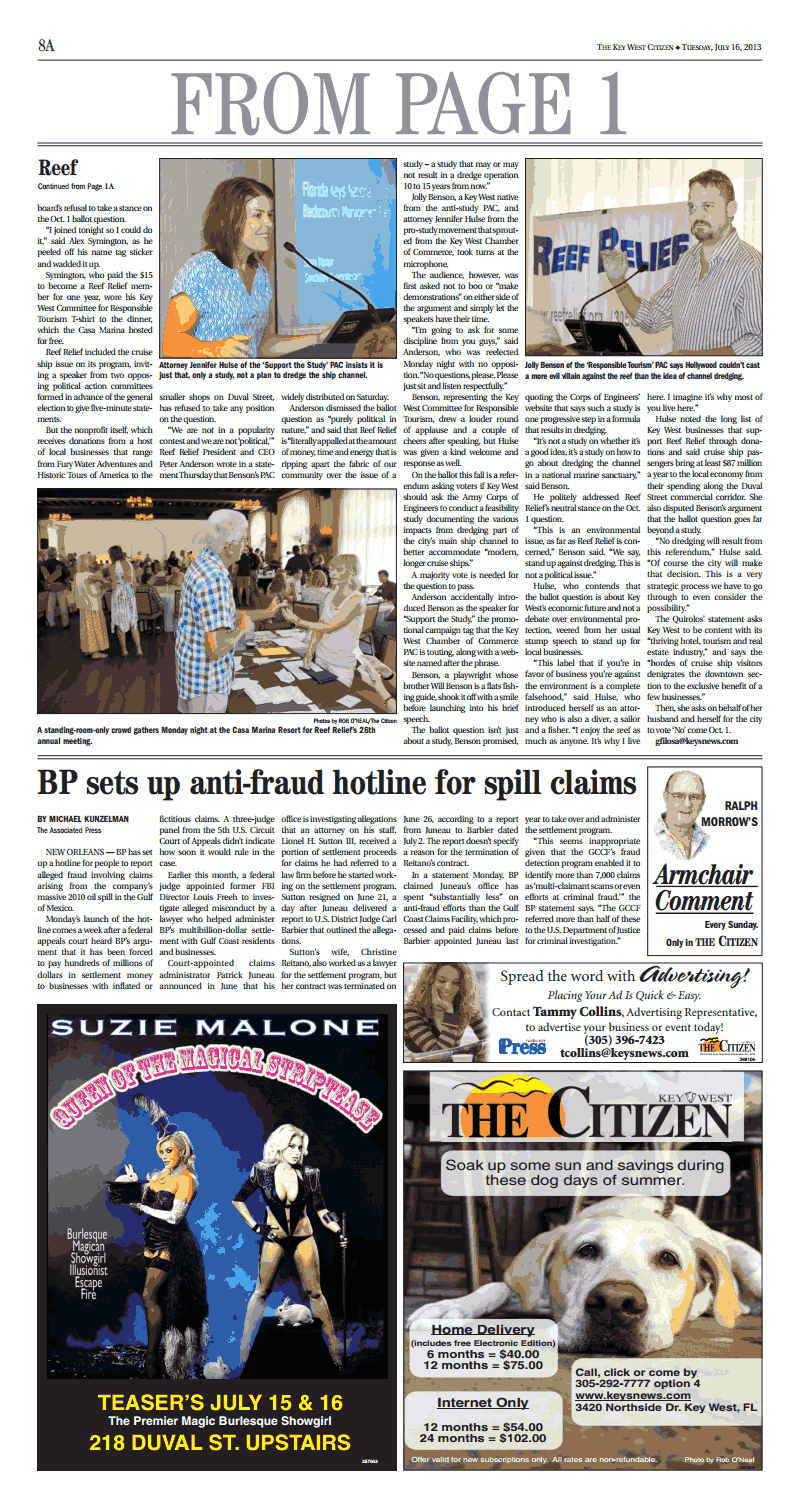
MIAMI — The government divers who plunged into the bay near the Port of Miami surfaced with bad news again and again: Large numbers of corals were either dead or dying, suffocated by sediment.
The source of the sediment, environmentalists say, is a $205 million dredging project, scheduled to end in July and intended to expand a shipping channel to make room for a new generation of supersize cargo ships.
The damage to the fragile corals was never supposed to have happened. In 2013, federal agencies created a plan to protect the animals from the churn of sand and rock by placing them at a distance from the dredge site. It was a strategy intended to balance Miami’s economic interests with the concerns of environmentalists, who worry about the rapid deterioration of reefs across South Florida.
Crucial to the plan was safeguarding the staghorn coral, a variety listed under the federal Endangered Species Act. But the vast majority of staghorn in the area was never relocated: Either it was missed during the initial 2010 survey by contractors for the Army Corps of Engineers, or it had spawned just as work began in 2013.

The corps, the agency in charge of the project, did relocate 924 other, nonendangered corals.
Florida and the Caribbean are rapidly losing their coral reefs, some of the most diverse ecosystems in the world, and the damage has raised intense criticism of how the Army Corps of Engineers has managed the project.
Environmentalists sued the corps in October, saying it violated the Endangered Species Act and the terms of a permit issued by the State Department of Environmental Protection.
“We’ve seen profound and severe impacts to our reef just off of Miami; it looks like a moonscape,” said Rachel Silverstein, the executive director of Biscayne Bay Waterkeeper, the lead environmental group bringing the lawsuit. “This damage stems from the fact that the corps and the contractors simply weren’t following the rules that were laid out for them when they started this project.”
Reefs around the world have experienced drastic declines as a result of pollution, acidification and overfishing. Higher ocean temperatures, which can bleach coral and kill it, have also damaged reefs. Some coral near the port suffered from bleaching last summer. In certain areas of South Florida, 90 percent of the coral is gone.
In Florida, coral reefs lure residents and tourists, who dive and snorkel to see their vivid colors and the tropical fish that they attract. Just as important, reefs serve as crucial wave buffers during tropical storms, protecting beaches and shoreline homes.
A report completed last month by the National Oceanic and Atmospheric Administration, which oversees endangered and threatened marine species, said 23 percent of the staghorn identified in the area by its divers in October was dead or dying. Another tract of nearby staghorn also appeared badly damaged but could not be fully surveyed.
The damage has prompted the corps and other federal agencies to dissect what went wrong, the extent of the harm and how best to avoid a repeat of similar problems.
A speedy review is especially important, environmentalists said, because Broward County, just north of here, is hoping to expand its shipping channel at Port Everglades, one of the country’s biggest ports and an area with considerably more staghorn than Miami. Environmentalists said they feared those plans repeated some of the mistakes in the Port of Miami dredging.
“The Army Corps will really need to sit down and try to figure out what happened in this case so we can design some better responses in the future,” said David Bernhardt, NOAA’s division chief for protected resources in the southeast.
The corps said it was possible that the Miami corals had been affected by the dredging, but it called the effects of the program “short term.” The corps defended its actions and said it had continually reported its concerns and findings to federal and state oversight agencies.
“We are reporting all of these things,” said Susan J. Jackson, a spokeswoman for the Army Corps of Engineers.
The corps, she said, is abiding by the rules of the permit and increased its monitoring of the corals once it learned they were ailing. In addition, Ms. Jackson said, the corps has not been charged with any violations by enforcement agencies and has diligently worked to correct problems as they have arisen. Lessons, she said, are always learned.
“We’re a learning organization,” Ms. Jackson said, adding that the corps was already better prepared for the Port Everglades expansion. “We take the lessons learned and apply them, not only to projects under execution, but to our future planning for projects.”
The loss of coral near the Port of Miami is indisputable. Federal and state divers reported finding some colonies so buried by sediment that they were virtually invisible. The sediment, reports by several government agencies said, was having a “profound” and “long lasting” effect on many corals.
Because coral needs light to survive, the cloudiness of the water has also worsened conditions. Divers reported difficulty seeing beyond five feet.
Though the dredge being used protects the reef from scraping, it appears to have caused more sediment than anticipated.
“Everyone was feeling the sedimentation issues would really be minor, so it sounded reasonable,” Mr. Bernhardt of NOAA said.
Shortly before dredging began, the corps realized it had significantly undercounted the staghorn near the channel; there were at least 243 colonies, not 31. NOAA approved a plan to move the 38 corals closest to the dredge about 820 feet away from the channel.
Things got worse from there. Underwater monitors created to measure the sediment did not work. The corps relied on divers to keep weekly tabs on the coral. Additionally, barges used to move the dredged material to shore were spilling or leaking sediment into the water.
Federal and state environmental agencies both asked the corps to remedy the barge problems. In a December letter to the corps, the federal Environmental Protection Agency listed 49 violations. The state sent its own letters about violations. The corps responded that it would fix the problems but denied that they were violations.
Last summer, NOAA, alarmed by the field reports, recommended the immediate relocation of the staghorns. After a delay, the corps paid NOAA to do the job in October. But half the dives were aborted, in part because the dredge was over the reef, making conditions dangerous. Divers managed to collect tissue from 77 percent of 205 ailing corals, though some had vanished or died.
Whatever the cause, in this case local taxpayers will bear the cost of the damage, which will be determined after the project is completed.
“I’m not quite sure that county taxpayers fully understand that they are on the hook for paying for this,” Ms. Silverstein said.

